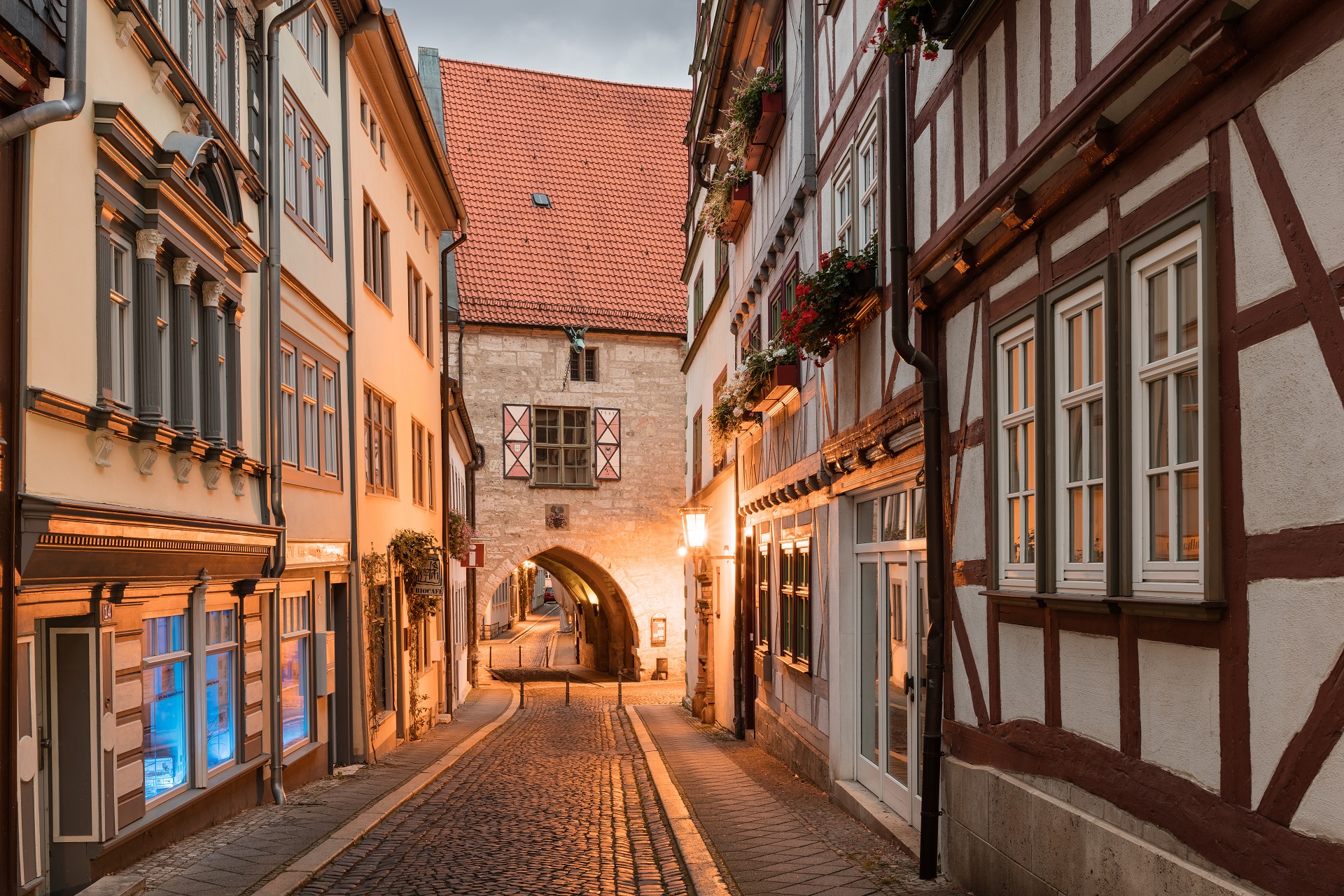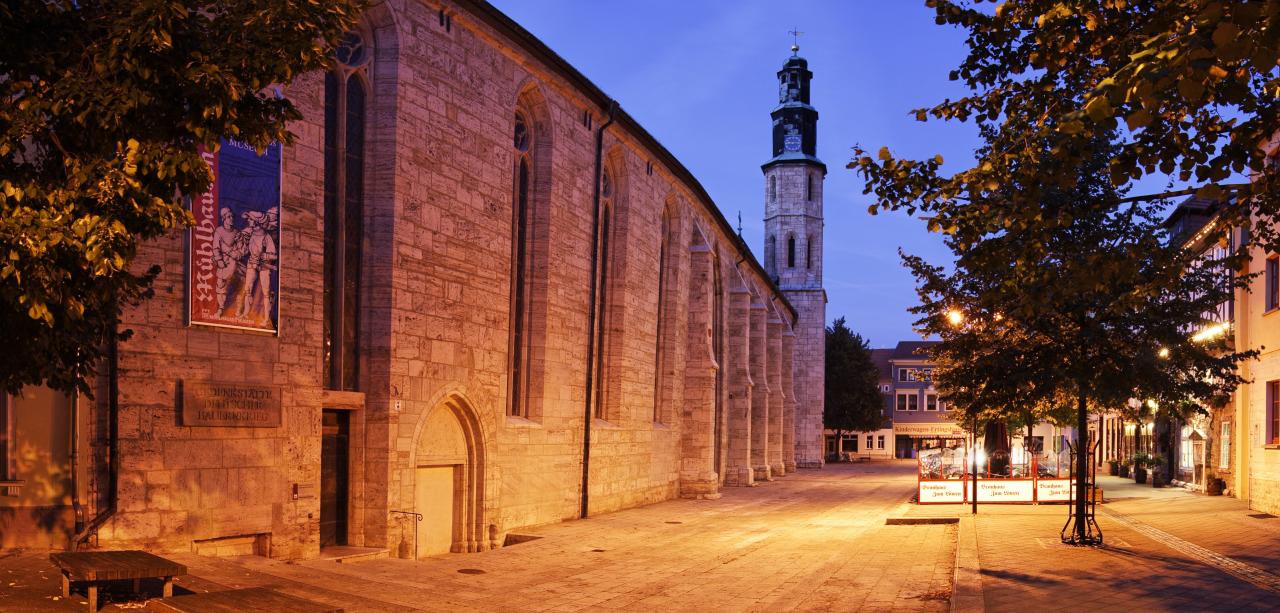
Müntzer and the Peasants' War
Mühlhausen
The unloved brother
The Mühlhausen preacher Thomas Müntzer was one of the first supporters of Martin Luther's ideas. However, he soon went beyond the reformer's demands and became more radical. He openly criticised the secular authorities and made Mühlhausen a centre of radical reforms. For Luther, the former comrade-in-arms. Müntzer became a rather "unloved brother", whom he openly criticised. Whatever we may think of him today, he is one of the most interesting personalities of the Reformation in Thuringia and an early fighter for a just world.
The ThomasMüntzer statue at the Mühlhausen town wall ©Martin Kirchner, Thhüringer Tourismus GmbH
The events around the year 1525
Thomas Müntzer addresses the rebellious peasants. He encourages them to execute "God's judgement". The peasant army captures the town of Mühlhausen. Müntzer becomes a decisive influence in the Thuringian uprising and Mühlhausen a centre of his new “kingdom of God”. Finally, he marches with 300 followers to Frankenhausen, where the peasant armies meet. With them is the rainbow flag, their symbol. It seems like a sign to them when a rainbow actually spans the battlefield near Frankenhausen on 15 May 1525. "God wants to cleanse the world with your help, fight bravely!" he encourages the rebels. But things turn out differently. The peasants are hopelessly outnumbered by the lansquenets of the princes. 6,000 lose their lives. Thomas Müntzer is arrested. He is taken to Heldrungen Fortress and tortured. On 27 May 1525, he is beheaded in Mühlhausen. His head is placed on a stake, which is erected outside the gates of Mühlhausen as a deterrent.
The town, the museums, the history
If you stroll through Mühlhausen's old town today, the first thing you notice are the magnificent churches. For a short time, Johann Sebastian Bach was an organist at the Divi-Blasii Church. St Mary's is a Müntzer memorial place, and Kornmarktkirche church houses the German Peasants' War Museum. The historic town wall is almost completely preserved. It bears witness to the fortified nature of a town that once had the right to co-determine the emperors of the Holy Roman Empire of the German Nation. Valuable historical documents such as imperial charters from the early days of the "Free Imperial City" or autographs of Johann Sebastian Bach can be viewed in the Imperial City Archive in the historic town hall.

Kornmarktkirche in Mühlhausen ©Tino Sieland, Wirtschaftsbetriebe Mühlhausen GmbH
TIP: PANORAMA MUSEUM IN BAD FRANKENHAUSEN
The Thuringian State Exhibition 2025 invites you to explore the theme of "freiheyt 1525. 500 years of the Peasants' War" and immerse yourself in a fascinating era of uprising and the longing for freedom. Under the leadership of Thomas Müntzer, the peasants of the 16th century courageously stood up for their rights. The captivating stories and courageous voices of this time continue to inspire and shape our idea of freedom to this day. ©Sebastian Köpcke, MühlhäuserMuseen
Header: ©Tino Sieland, Stadtverwaltung Mühlhausen







